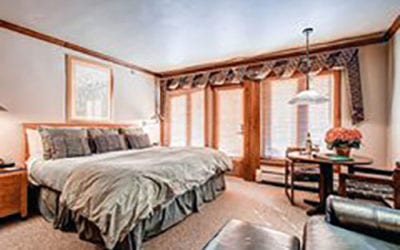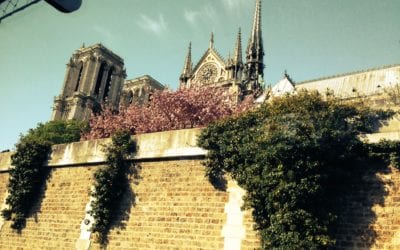My first planned visit to Ubeda never happened. I was staying at nearby Jaen ensconced in the Parador Santa Catalina built into the imposing castle when I started my trip. After a half day traveling to Guadix on the zigzagging roads to visit the cave dwellings, the hours-long trip from there to Ubeda and then several more hours back to Jaen would just have taken too much time.
Back in those days, the mid-1980s, the longest stretch of straight road through the mountainous terrain and the olive groves was perhaps a couple hundred meters. Those tortuous roads through dusty hills lined with seemingly endless olive trees insulated both Guadix and Ubeda from the tourist limelight.
 Guadix and its cave dwellings
Guadix and its cave dwellings
Guadix doesn’t have much to recommend it other than its unusual cave dwellings. Physically, it doesn’t seem to have changed much since my last drive through the village 22 years ago. The biggest change has been the quality of the roads to get there and hence the arrival of tourists. With the tourists have come the Cave Museum (two of them) and 50-seat buses with German, Japanese, British and Dutch travelers sporting tags around their necks, wandering across new parking lots and squinting at magnets, cave house models and postcards.
The cave dwellings are just as simple as ever. They really haven’t been spruced up much except the “museums.” The old walled city center is worth a walk-through with an interesting cathedral and main square. Drivers can bring their cars into the center of the town, but they will find themselves backing out of one-way streets, trying to figure out just who has the right of way on a road that will only fit one car and parking is just about impossible.
For my dime, the nearby town of Purullena has far more attractive cave houses. The first right turn after crossing the town limits on the road from Guadix back to Granada brings drivers into a cave dwelling subdivision complete with sidewalks, flowers and brightly painted facades. The cave district in Guadix is looking a bit untidy and neglected.
 A surprising lunch
A surprising lunch
On the back road from Guadix to Ubeda we stopped for lunch in the farming town of Moreda at a gas station restaurant with a dozen cars packing the parking lot. (One of my rules — if locals eat there, it it probably pretty good.) Restaurant El Salero de los Montes turned out to be one of our most surprising and good meals with tasty gazpacho, heavy garlic smothering the grilled pork, a fine leg of lamb, creamy guajada or natillas and a bottle of chewy, earthy, opaque red wine from a local vineyard on the other side of the mountains. This was the menu del dia for Euros 10! Making a reservation isn’t necessary and if you find Moreda on the highway between Carolina and Ubeda in Granada province, you can’t help but find the restaurant.
The drive curves across wide fields with rich red soil where tractor and truck dealerships, feed and seed stores and machinery repair shops stake out either end of small farming villages composed of low-lying white buildings. The road then twists and turns through rugged mountains to a pass that opens up a panorama of a sea of olive trees.
 From this point, about halfway between Guadix and Ubeda, the steely green olive trees do not stop. Every section of arable land is planted. Armies of matching olive trees march across hillsides, down dales and into the distance. Kilometer after kilometer, the landscape changes, the narrow road dips and climbs and occasionally, small churches and farm buildings loom around corners, but the expanse of olive groves remains soldiering into the haze.
From this point, about halfway between Guadix and Ubeda, the steely green olive trees do not stop. Every section of arable land is planted. Armies of matching olive trees march across hillsides, down dales and into the distance. Kilometer after kilometer, the landscape changes, the narrow road dips and climbs and occasionally, small churches and farm buildings loom around corners, but the expanse of olive groves remains soldiering into the haze.
 Ubeda, an isolated jewel
Ubeda, an isolated jewel
Built on a hilltop surrounded by these olive trees stretching as far as the horizon, Ubeda offers a bit of undiscovered and unspoiled Spain. Back in the Gothic period architects who might have changed its Renaissance character bypassed it. More recently tourists allowed it to slumber in isolation.
The town is still isolated. Though now served by good highways, its train station is miles away and the city is not on the main route to any major population center. We arrived in a light drizzle during the last half hour of siesta. Ubeda was, shall we say, sleepy. How sleepy? We couldn’t find a bar or farmacia open in the middle of town.
 The main tourist church in town and a masterpiece of Renaissance architecture, Capilla de El Salvador, is privately owned by the Medinaceli family and was selling entrance tickets. However, the plaza stretching before the church facade along the front of the 16th-century Parador was deserted. One small tourist shop with a handful of visitors dodging the on-and-off-again rain sold ceramics, olive oil, honey and other local products together with postcards, key chains and painted tiles.
The main tourist church in town and a masterpiece of Renaissance architecture, Capilla de El Salvador, is privately owned by the Medinaceli family and was selling entrance tickets. However, the plaza stretching before the church facade along the front of the 16th-century Parador was deserted. One small tourist shop with a handful of visitors dodging the on-and-off-again rain sold ceramics, olive oil, honey and other local products together with postcards, key chains and painted tiles.
The traditional deep green ceramics in the souvenir shop together with a line in The Rough Guide Andalucia guidebook led us outside the town walls through the 13th-century Mudejar Puerta del Losal to Plaza Olleros (Potters’ Square) where local potters work in their studios and maintain galleries. The special colors of the Ubeda glazes are achieved by using olive wood and ground seeds in ancient Arab kilns.
 Góngora Ceramics
Góngora Ceramics
Ironically, only the Alfarería Góngora gallery and workshop open was open. (This was the same potter who had thrown the ceramics we saw in the tiny souvenir shop.) Maybe “open” is too strong a word. The shutters were up. We could see inside the windows. A bell said, “Ring me” in Spanish. After about five minutes of ringing, knocking and walking around the building, we heard the door lock buzz and pushed our way into the Góngora family shop.
Smiling, Antonia came padding down the stairs to greet us in her blue smock and turned on the lights in the displays. We wandered through the sales rooms and chatted with Antonia who invited us to see the workrooms in the back.
The potting studio was surprisingly spacious with pottery and ceramics in various stages of production. Some were drying, others awaiting glazing, a shelf full was in the process of being scored with decorations, another group was having clay carefully cut away to create candle holders and light fixtures, and in another corner pitchers and jugs awaited handles.
Boxes were stacked along the walls ready for packing and those already filled were on pallets next to the garage doors ready for shipping.
Downstairs Alfonso, the potter who actually creates almost every piece that is shipped works at his wheel. He is the fifth generation of his family to work here in this studio. Antonia is his wife and a handful of other family members work together with the couple either painting and packing their ceramics or firing up the kiln.
He sits in the midst of his elements. A mixer to bring clay to a more workable consistency stands at his right. In front of him beyond the potter’s wheel just-completed pieces rest on wooden rails. To his left drying pottery awaits inscribing, cutting and glazing.
Effortlessly, he plops a cylinder of ruddy wet clay extracted from his mixing machine onto his potting wheel and shapes it into a long-necked pitcher, jug, vase, plate, lamp or bowl. The old kiln stands in the back of the room along with some smaller electric kilns. Today, the kilns are idle. This is a day for transforming clay.
 Tapas bars in Linares
Tapas bars in Linares
We drove out of Ubeda under grey skies on the road for Linares, the city where legendary bullfighter Manolete was killed by a bull, Islero, in the city’s Plaza de Toros back in 1947. On a more positive note, this city is also the birthplace of Segovia.
Today, the Linares bullring is still a stop for many bullfighters, however the town has grown immensely with not much to recommend it for tourism. Linares is a basic bustling working man and working woman’s kind of factory town with more than 60,000 residents.
As with all old Spanish cities, the old part of the town is a maze of narrow streets. After getting lost several times, I ended up hailing a couple of Telepizza delivery guys on their motorscooters and asking them to lead me to the hotel. In minutes I was parked in the tight garage of Hotel Victoria, found through the Michelin Red Guide. None of my other guidebooks even mentioned Linares.
 When I asked about restaurants and tapas bars, the attendant at the hotel proudly told me that the town had more than 300 bars and plenty of places for tapas. She then proceeded to outline far more places than I could ever visit in one evening. One bar had tapas where the owner served whatever he created that evening. Another was based on a bullfighting theme with an older crowd. Across the street, the Bar Albero specialized in snails and on the walking street I was told that I could find Linares’ best patatas bravas.
When I asked about restaurants and tapas bars, the attendant at the hotel proudly told me that the town had more than 300 bars and plenty of places for tapas. She then proceeded to outline far more places than I could ever visit in one evening. One bar had tapas where the owner served whatever he created that evening. Another was based on a bullfighting theme with an older crowd. Across the street, the Bar Albero specialized in snails and on the walking street I was told that I could find Linares’ best patatas bravas.
We marched out the door, across the street, through the small plaza and began our tapas adventures. It was a Friday night and the bars were packed. One of the good things about being in a city devoid of tourists is the feeling of being someone special and interesting rather than a visitor in the way of the locals. The bar crowd eyed us curiously, were quick to smile and always had a recommendation for the next bar to stop on our tapeo circuit.
Even without glorious churches, monumental squares and major museums, the people of Linares are enough to make any visitor want to return. When I come back, I’m planning on making a dent in those other 296 bars.
Photos by Charles Leocha (top to bottom)
Cave Dwellings
Olive Groves
Olive Groves
Ubeda, Capilla de El Salvador
Ubede, Ceramics
Antonia Góngora
Alfonso Góngora
Liinares, Taberna Largartijo
Linares, Taberna Albero

Charlie Leocha is the President of Travelers United. He has been working in Washington, DC, for the past 14 years with Congress, the Department of Transportation, and industry stakeholders on travel issues. He was the first consumer representative to the Advisory Committee for Aviation Consumer Protections appointed by the Secretary of Transportation from 2012 through 2018.



